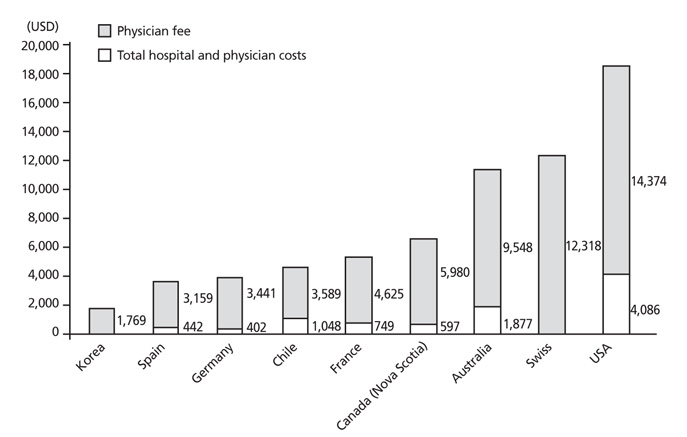J Korean Med Assoc.
2016 Jun;59(6):429-435. 10.5124/jkma.2016.59.6.429.
Measures to address obstetrically underserved areas: limitations and future directions
- Affiliations
-
- 1Department of Obstetrics and Gynecology, Chonnam National University Medical School, Gwangju, Korea. kimyh@chonnam.ac.kr
- KMID: 2305543
- DOI: http://doi.org/10.5124/jkma.2016.59.6.429
Abstract
- Since 2015, the Support Project for Obstetrically Underserved Areas has been operating a total of 31 obstetric clinics, including 12 delivery clinics, 14 outpatient clinics, and 31 mobile clinics. However, the effectiveness of the project is being questioned due to the low birth rate in some of the hospitals that received delivery clinics through the project. Despite the support project, the number of obstetrically underserved areas is increasing as clinics ceasing their business or at least give up maternal care. This has led to the need for a discussion regarding the limits of obstetrics clinics in underserved areas that are operated by the support project itself and the direction of future improvements. The increasing number of obstetrically underserved areas that lack delivery clinics within a one-hour drive range can have grave consequences, which are not limited to maternal medical systems alone, but also towards the general deterioration of the community. Thus, it has been determined that existing problems should be addressed and the project should continue operating with the Support Project for Obstetrically Underserved Areas Act as the foundation and minimal measures for strengthening the social security system, which is essential. Additionally, aggressive policymaking by the government is thought to be needed for the sake of expanding the extremely weakened obstetric infrastructure.
Figure
Cited by 2 articles
-
Revaluation of measures in obstetrically underserved area
Yoon Ha Kim
J Korean Med Assoc. 2016;59(6):414-416. doi: 10.5124/jkma.2016.59.6.414.Preparation of the nursing workforce in the field of women’s health
Sukhee Ahn
Womens Health Nurs. 2024;30(2):91-95. doi: 10.4069/whn.2024.05.30.
Reference
-
1. Lee GY. Establishment of health care delivery system between the integrated center for high-risk pregnant women and neo-nates and the maternity care in the underserved area. Sejong: Ministry of Health and Welfare;2015.2. Cho DB. Identifying current state of medical malpractice in obstetric depart-ment and causes of medical malpractice through an analysis of court decisions on medical disputes [dissertation]. Seoul: Yonsei University;2015.3. Korean Society of Maternal Fetal Medi-cine. The survey on the actual conditions of delivery room and delivery of high-risk pregnancy. Seoul: Ministry of Health and Welfare;2012.4. Oh SY, Kwon JY, Shin JH, Kim A. The Influence of obstetric no-fault compensation act on future career of residents in obstetrics and gynecology. Korean J Obstet Gynecol. 2012; 55:461–467.
Article5. Korean Society of Obstetrics and Gynecology. The evaluation of supporting methods for reliable antenatal care and birth for pregnant women in obstetrically underserved area. Seoul: Ministry of Health and Welfare;2013.6. Korean Medical Association, Research Institute for Healthcare Policy. Medical price levels of OECD countries: a comparative study. Seoul: Korean Medical Association;2013.7. Lee C, Lee HJ, Park SJ. Comparative study on medical fees: cae-sarean section, cataract, and appendectomy surgeries among OECD countries. J Korean Med Assoc. 2013; 56:523–532.
Article
- Full Text Links
- Actions
-
Cited
- CITED
-
- Close
- Share
- Similar articles
-
- A Maternity Waiting Home Is an Alternative Approach for the Accessibility of Pregnant Women in an Obstetrically Underserved Area of Korea
- Revaluation of measures in obstetrically underserved area
- Program for obstetric care supporting underserved areas in Korea: outcome and evaluation standards
- Could the Obstetrically Underserved Areas Disappear After the Increase in the Admission Number of Medical Students?
- Improvement of supportive systems for medically-underserved areas


